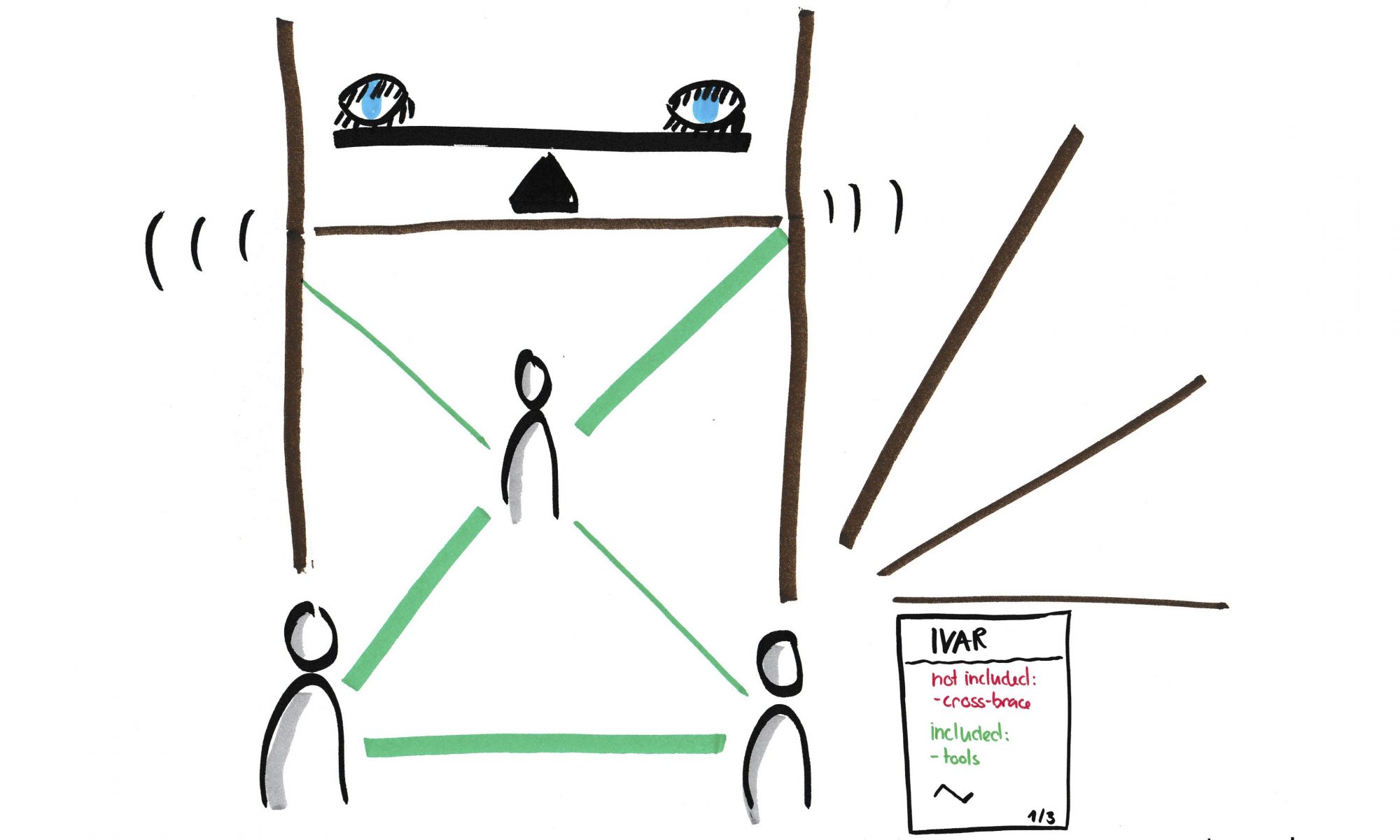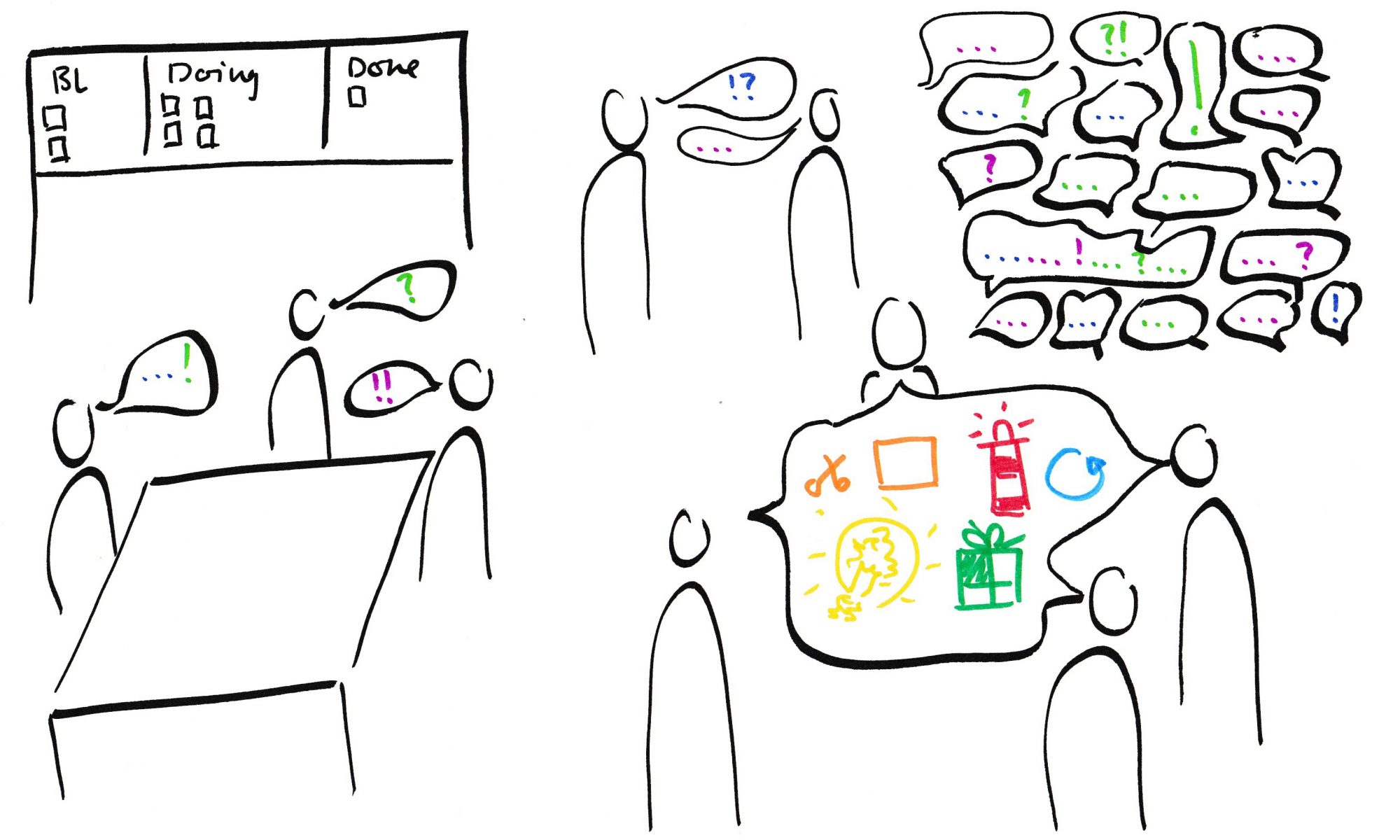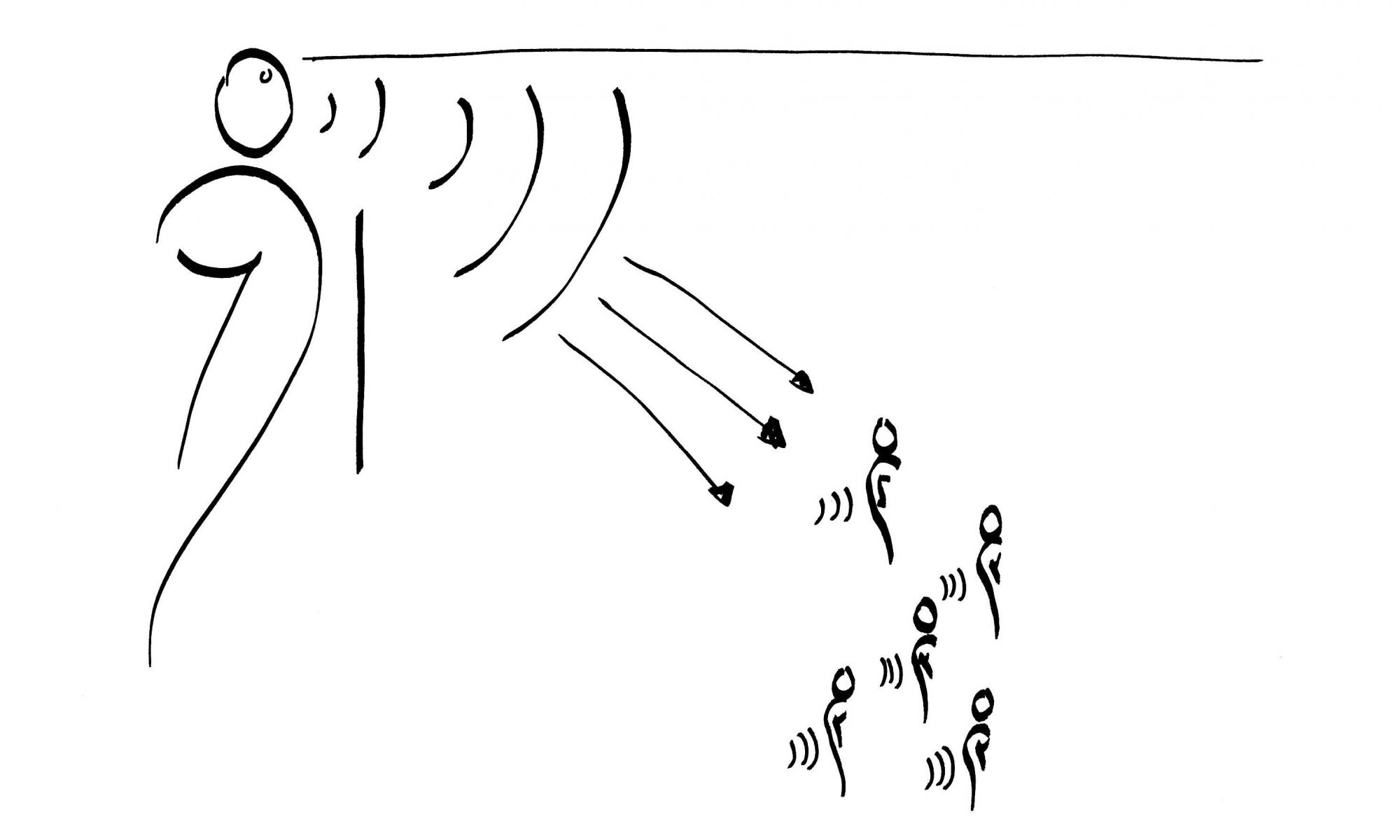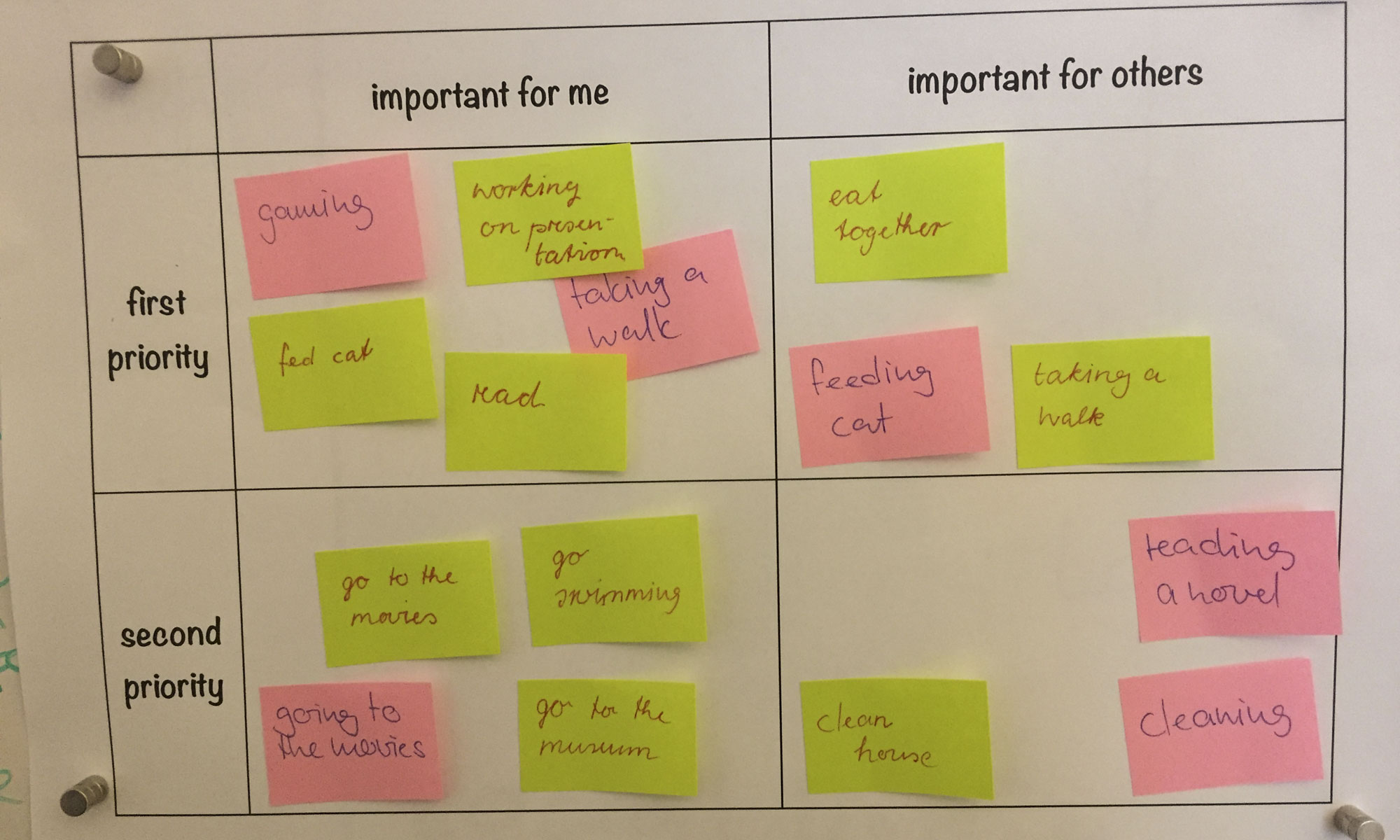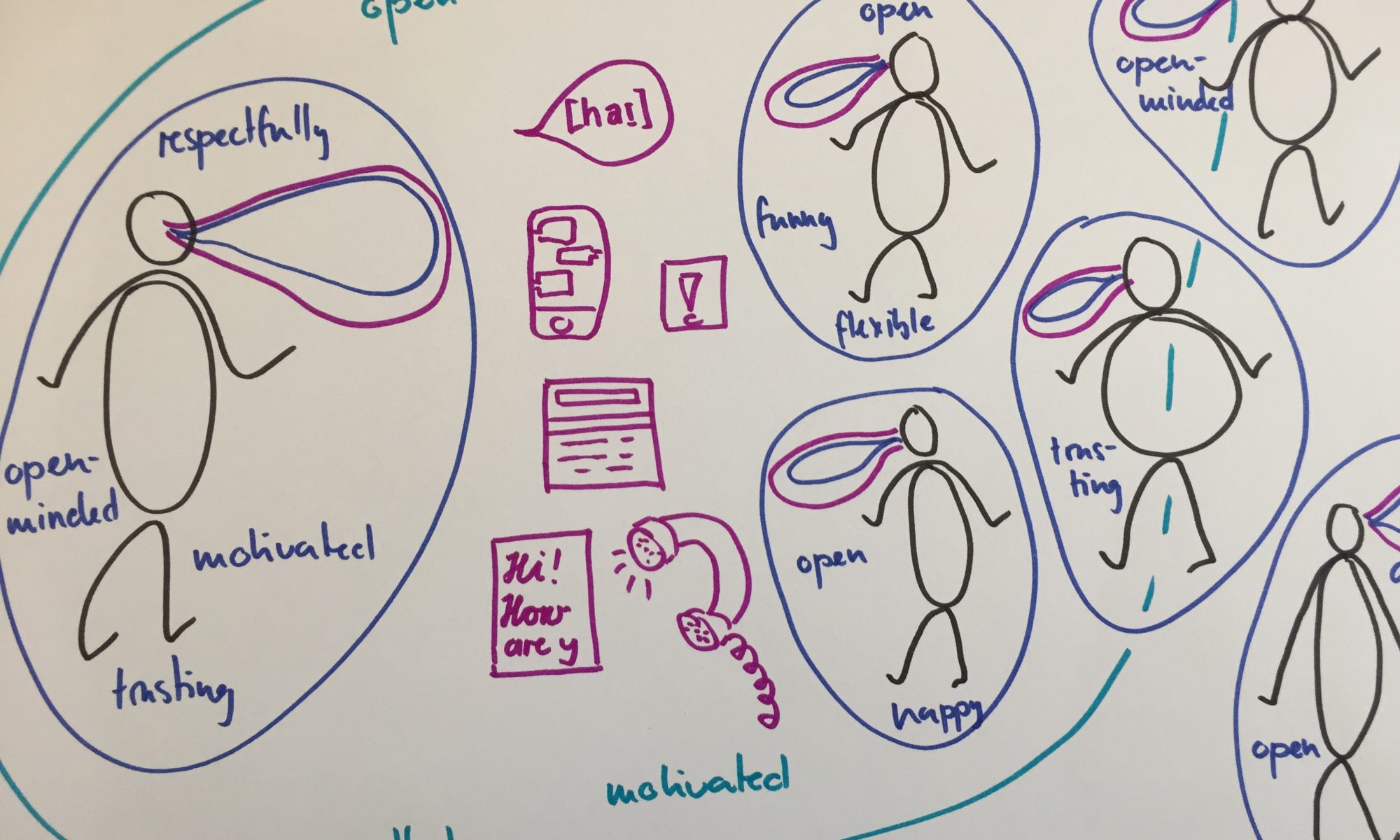It is a known fact that personal communication is a key to success in agile environments: You need to communicate to collaborate and self-organize as a team. That means: You need to have certain soft skills, especially social und and communicative competencies.
„Agile Communication and Soft Skills“ weiterlesen
The Triangle of Stability
Sociocracy 3.0 provides structures of stability. It is based on patterns that structure communicative interactions to collaborate as equivalents. The triangle can symbolize this: Ever forgotten to buy a cross-brace at IKEA and watching your shelf collapse? The triangle is what gives a square shelf stability…
„The Triangle of Stability“ weiterlesen
Scrum in higher education (Part III): What I’ve learnt from working with Scrum
I let my Students at a University of Applied Sciences work with Scrum for one semester. My learning is, that you can apply Scrum in very different contexts, because its simple rules make self-organization feasible and the transparency gives a good bases for communication.
„Scrum in higher education (Part III): What I’ve learnt from working with Scrum“ weiterlesen
What stings sticks
[Deutsche Zusammenfassung] When do you really and consciously change? Willingly? I change willingly when I unexpectedly detect something I do that hinders me. Within a second I realize a pattern, that before was hiding in a blind spot and from that moment on I am uncomfortable with it. Detecting such things and overcome them makes me more efficient and effective because I stop to impede myself. How could we implement such reflection into everyday life?
„What stings sticks“ weiterlesen
Agile communication vs Small Talk tactics
[mit deutscher Zusammenfassung] Last week I wrote about Small Talk and about being open to mean it, when you ask someone how they are. This aspect isn’t restricted to small talk. It’s about what agile communication is: Openness and honesty, interaction and authenticity. How can you be all that if your interactions are reduced to superficiality?
„Agile communication vs Small Talk tactics“ weiterlesen
Sprichst du noch oder hörst du schon zu?
[with english summary] Ich hatte letzthin einen schiefen Tag, der schon mitten in der Nacht sehr schräg begann. Irgendwann nachmittags haben sich meine Wege mit jenen eines Kollegen gekreuzt. Er fragte, wie es mir gehe und ich habe geantwortet: „Naja, ist nicht gerade so rosig heute.“ Er hat mich völlig verblüfft angeschaut und erwidert, Small Talk-Fragen seien nie ernst gemeint, da sage man immer, dass es einem gut gehe.
„Sprichst du noch oder hörst du schon zu?“ weiterlesen
self-organization and chaos
[with english summary] Scrum definiert als Framework unter anderem, welche Begriffe für Rollen angemessen sind und welche nicht. Ein Fokuspunkt ist dabei die Selbstorganisation. Und diese kann eine echte Herausforderung sein. Für mich war sie als als erstes auf der sprachlichen Ebene.
„self-organization and chaos“ weiterlesen
Eisenhauer für das Wohlbefinden
[english summary] Das Eisenhower-Prinzip mit seinen vier Feldern von „wichtig und dringlich“ zu „weder noch“ ist in Verruf: Was ist schon nicht wichtig und was nicht dringend? Und was wichtig ist, ist auch dringend und umgekehrt. Das Prinzip kann aber auch agil verwendet werden und von einer Hardcore-ToDo-Liste zu einem Instrument werden, das einem Wohlbefinden verschafft.
„Eisenhauer für das Wohlbefinden“ weiterlesen
Agile Didaktik
Meine erste Erfahrung mit agiler Didaktik liegt schon ein paar Jahre zurück. Ich habe damals, im Team-Teaching, einen Kurs in der Form des Problem Based Learning (PBL) angeboten. Das Ergebnis hatte mich damals etwas enttäuscht. Es ist zwar gut gelaufen, ich habe mich aber gefragt: „Wars das jetzt?“
„Agile Didaktik“ weiterlesen
agile communication
[with english summary] Was ist agile Kommunikation oder was könnte agile Kommunikation sein? Grundsätzlich kann man unterscheiden zwischen Kommunikationsmethoden und -werkzeugen auf der einen und dem Kommunikationsstil auf der anderen Seite. „agile communication“ weiterlesen

